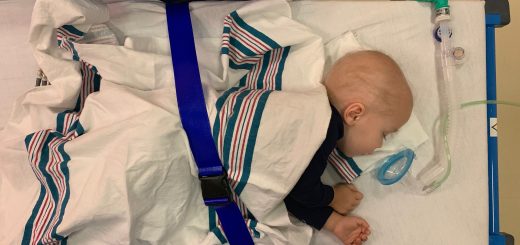Why “high risk”?
Last night we returned home – a day early – from Wes’ first round of interim maintenance (IM), the third of five phases of therapy that began the day he was diagnosed, and will continue through end of treatment (EOT) more than two years from now.
Each patient is assessed at diagnosis according to a number of different criteria. This assessment places the patient into one of several risk groups that determine the exact treatment protocol, and which also gives deeper insight into a prognosis for long-term survival and recovery.
There’s a lot of jargon that we’ve grown used to, but one aspect of his diagnostic classification that frequently alarms others is the “risk group” component of his diagnosis. Any of seven different factors can change the risk group assignment up or down (from “standard risk”) at diagnosis:
- white blood cell (WBC) count
- age of your child
- how many leukemic cells are inside the central nervous system (CNS)
- ALL subtype (B-cell or T-cell)
- chromosomal changes in leukemic cells
- whether leukemic cells are present in the testes
- response to induction therapy as indicated by the MRD at day 29
The day Wes was diagnosed, he had two WBC counts – in the first labs our pediatrician ordered, and later in the ER at CHOP during evaluation and confirmation. The threshold for WBC in standard risk is under 50,000 (cells per cubic mm of blood), and Wes’ WBC counts were right near this line; one of his tests was slightly over, and the other slightly under. There was no other major risk factor – no sign of leukemia in his CNS or testes; he’s in the ideal age range, had no chromosomal concerns, and he responded well to induction – but protocol dictates he be classified as high risk, which ensures his treatments are going to err on the side of being stronger, more intense.
While there is a prognostic difference in each risk group, this is just a statistical question – Wes is not a statistic, he’s an individual, and his prognosis remains excellent.


